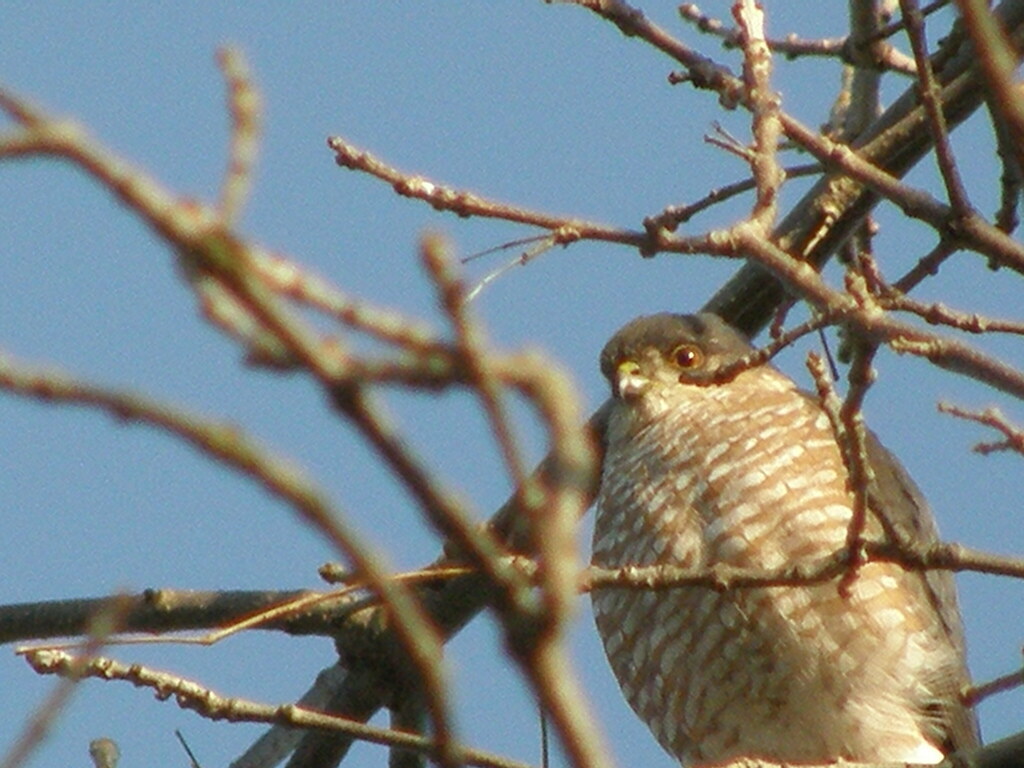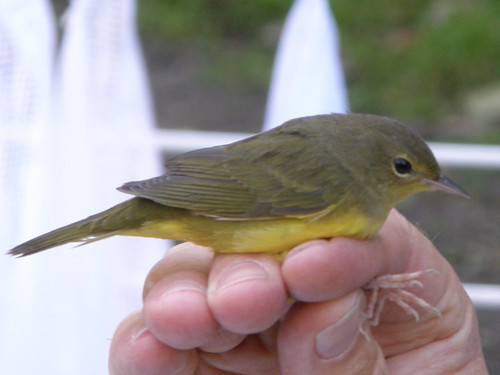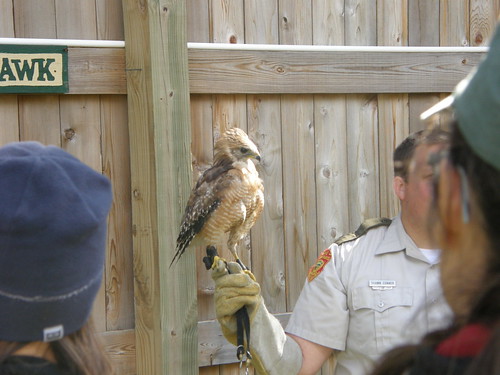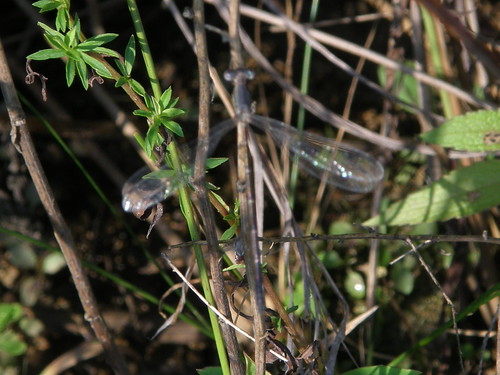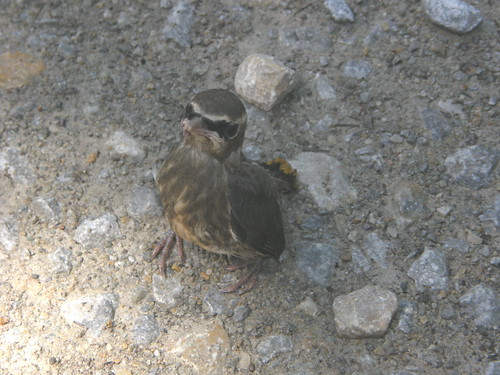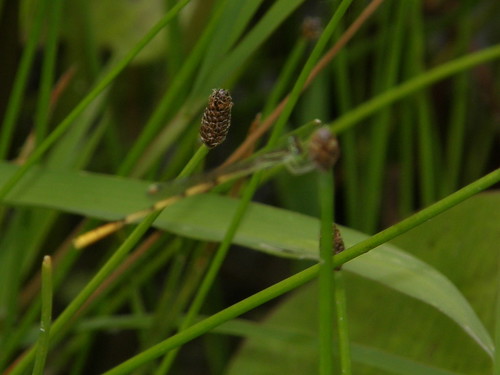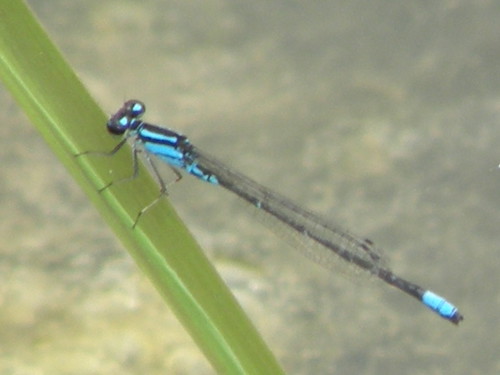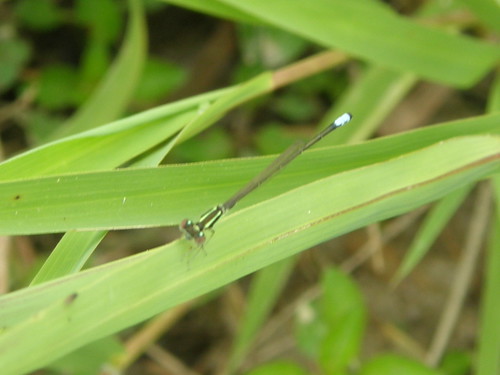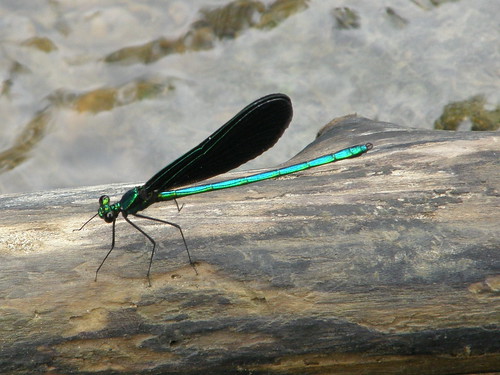Tweet
While out taking care of business today, I decided to stop and bird a nice looking field adjacent to the Mill Creek in West Chester, Ohio (north of Cincy). Glad I did.
Birds seen included:
4 Wilson's Snipe
6 Eastern Meadowlarks
Several White-crowned, Song, American Tree Sparrows
3 Redtail Hawks
3 American Kestrels
Canada Geese, Mallards, American Black Ducks, Belted Kingfisher,
and this Peregrine Falcon diving on some Mourning Doves: (Keep watching, a Peregrine will soon appear!) P.S. - There is no sound!
Tweet
Thursday, December 31, 2009
A nice way to end out a bad year...
Sunday, December 06, 2009
National Blue Jay Awareness Month
Tweet
Author Laura Erickson has declared this December to be National Blue Jay Awareness Month! For the details behind her "official" declaration, please visit her Twin Beaks Blog.
**I must profess that I was a hunter before I was a birder. I was brought up around hunting and fishing, which is what led to my becoming a birder. I eventually started paying attention to every natural thing around me and ended up doing very little actual hunting at all.**
Blue Jays are not well regarded by most hunters. When I first started hunting deer, I was told that "If you hear blue jays screaming, do not bother hunting in that spot - they'll give you away!" However, from my own personal experiences, I have found the opposite to be true. Deer are curious animals. I have had more deer come in to investigate all the commotion/scolding put on by jays than be spooked by them.
I have hunter friends that often ask me how they can REPEL Blue Jays! I would ask them in return - "Why would you want to repel a bird as cool as a Blue Jay?"

Of all the many birds that come to my feeders, the Blue Jay is the only bird that my mother will ask me over and over "That is a beautiful bird, what bird is that?"

Not only are Blue Jays intelligent, fun, and interesting to watch, they can lead you to good birds! (My favorite thing about them!)
Tweet
**I must profess that I was a hunter before I was a birder. I was brought up around hunting and fishing, which is what led to my becoming a birder. I eventually started paying attention to every natural thing around me and ended up doing very little actual hunting at all.**
Blue Jays are not well regarded by most hunters. When I first started hunting deer, I was told that "If you hear blue jays screaming, do not bother hunting in that spot - they'll give you away!" However, from my own personal experiences, I have found the opposite to be true. Deer are curious animals. I have had more deer come in to investigate all the commotion/scolding put on by jays than be spooked by them.
I have hunter friends that often ask me how they can REPEL Blue Jays! I would ask them in return - "Why would you want to repel a bird as cool as a Blue Jay?"

Of all the many birds that come to my feeders, the Blue Jay is the only bird that my mother will ask me over and over "That is a beautiful bird, what bird is that?"

Not only are Blue Jays intelligent, fun, and interesting to watch, they can lead you to good birds! (My favorite thing about them!)
Tweet
Wednesday, November 25, 2009
Early morning Merlin
Tweet
Woke up this morning, looked out the window, and found this Merlin perched in the tree across the street. I am starting to see more and more Merlins around my place every fall/winter. (Lighting was terrible. This was a quick snap, as the bird didn't stay long)
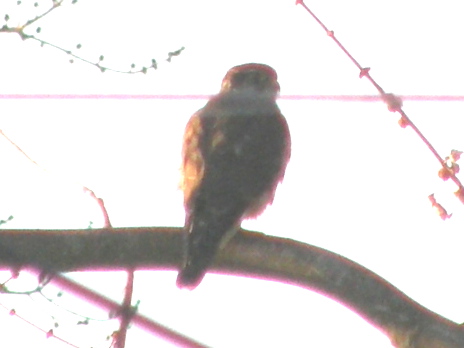 Tweet
Tweet
 Tweet
Tweet
Monday, November 16, 2009
Another so-so birding day in SW Ohio
Tweet
Seeing all my birder friends' lists from recent trips from all over the place has got me wanting to see birds. Since my current financial situation will not allow me to travel to the places where good birds are, I can only bird locally for now. (My life list has been stuck at just under 300 for some time, partly due a lack of funds and the lack of quality bird habitat in SW Ohio - specifically referring to wetland/shorebird habitat)
I decided to stop by East Fork State Park Nov. 16th. I have had the feeling that I am overdue to get a good bird or rarity for some time now, but today was not the day. A quick scan of the beach and the lake with the scope only produced Ring-billed Gulls and 3 Herring Gulls. That was it. As I was getting ready to take off, a woman and her child walked down to the water's edge and the child threw something into the water. About 3 seconds later, I noticed a bird with white wing patches flying in fast from the right. It landed right in front of me. It was my FOS (first of season) Red-breasted Merganser (female). I don't know where the bird came from, but I can see how I missed it as it was feeding(?):
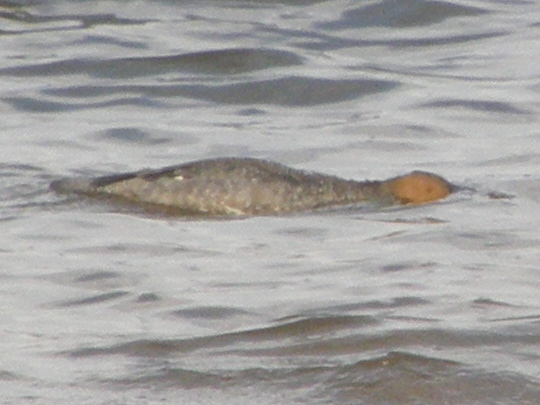 Feeding or drinking? female Red-breasted Merganser
Feeding or drinking? female Red-breasted Merganser
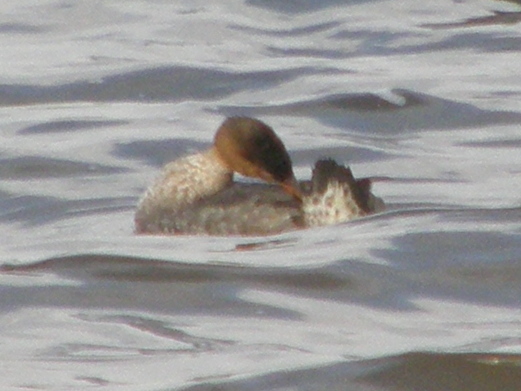

After not seeing anything else, I decided to stop by the dam as I had to go that way anyway. Scanned the lake a second time and only came up with 2 Mallards and 6 Pied-billed Grebes. As I was getting ready to leave, a large bird flew in from over the tree line - an immature Bald Eagle that landed in a tree across the lake. At about the same time, another birder came running up to the car asking if I had seen it. I stopped to talk to him and ended up carrying on a long conversation about eagles, people we both know, and eagles. Always enjoy meeting new birders!! About 5 minutes into our conversation about eagles, another immature Bald Eagle flew in from the same direction and landed in the same tree.
I was able to get a distant shot of the eagles from across the lake. There are 2 eagles in the picture below if you look hard enough. (click on image for larger image)

Tweet
I decided to stop by East Fork State Park Nov. 16th. I have had the feeling that I am overdue to get a good bird or rarity for some time now, but today was not the day. A quick scan of the beach and the lake with the scope only produced Ring-billed Gulls and 3 Herring Gulls. That was it. As I was getting ready to take off, a woman and her child walked down to the water's edge and the child threw something into the water. About 3 seconds later, I noticed a bird with white wing patches flying in fast from the right. It landed right in front of me. It was my FOS (first of season) Red-breasted Merganser (female). I don't know where the bird came from, but I can see how I missed it as it was feeding(?):
 Feeding or drinking? female Red-breasted Merganser
Feeding or drinking? female Red-breasted MerganserThe bird finally stopped feeding(?) and started preening.


After not seeing anything else, I decided to stop by the dam as I had to go that way anyway. Scanned the lake a second time and only came up with 2 Mallards and 6 Pied-billed Grebes. As I was getting ready to leave, a large bird flew in from over the tree line - an immature Bald Eagle that landed in a tree across the lake. At about the same time, another birder came running up to the car asking if I had seen it. I stopped to talk to him and ended up carrying on a long conversation about eagles, people we both know, and eagles. Always enjoy meeting new birders!! About 5 minutes into our conversation about eagles, another immature Bald Eagle flew in from the same direction and landed in the same tree.
I was able to get a distant shot of the eagles from across the lake. There are 2 eagles in the picture below if you look hard enough. (click on image for larger image)

Thursday, November 12, 2009
Avipoxvirus
Tweet
Today, I decided to take a walk down my road to look for birds (what else?). Really didn't see much bird wise (maybe because the neighbor's dogs were following me barking constantly???).
What I did find was another dead bird laying on the side of the road. This time it was a Common Grackle Quiscalus quiscula that appears to have succumb to complications from the cutaneous form of an Avipoxvirus. What's up with me finding all these dead birds on my walks? :-(
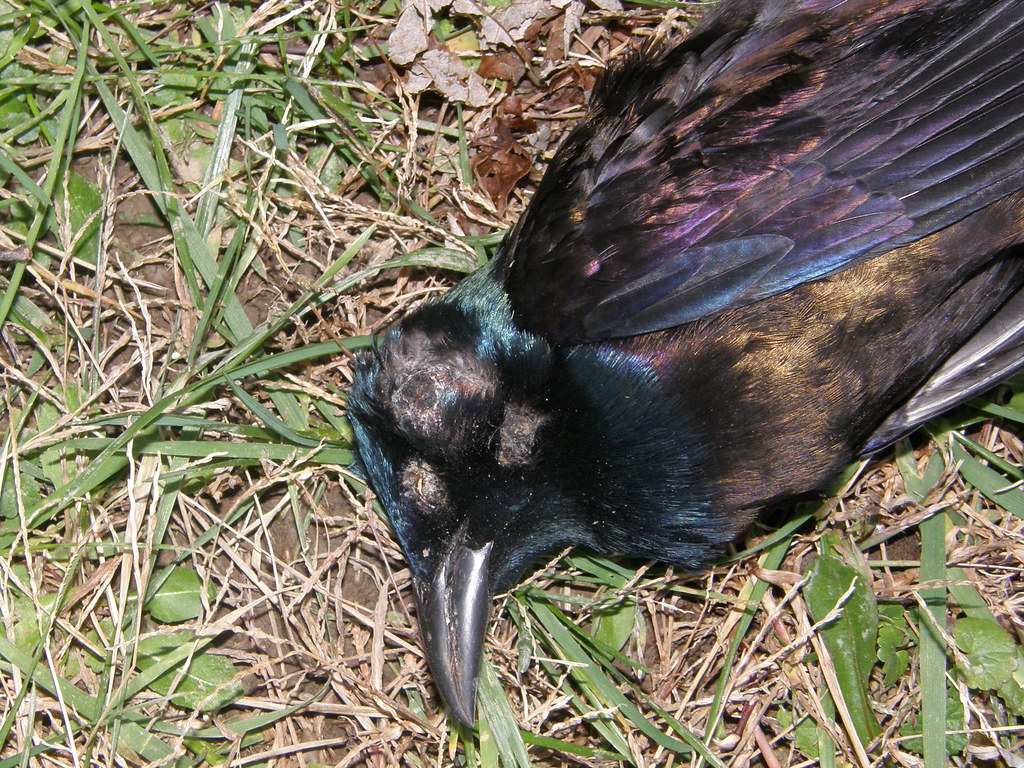
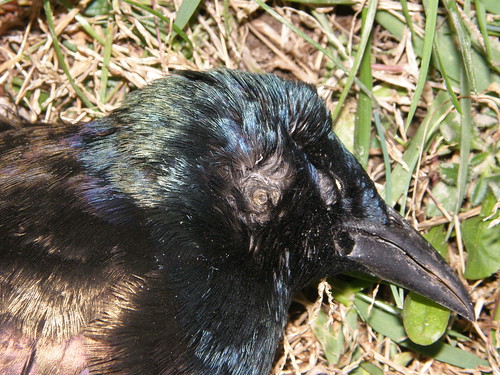
Since avian pox is contagious to other birds, I used a stick to turn the bird over. I don't know if this particular strain can infect psittacines, but didn't want to take any chances. This is also another good reason to disinfect your bird feeders and bird baths as often as possible (luckily, I have never seen this bird at the feeders or birdbath). Tweet
What I did find was another dead bird laying on the side of the road. This time it was a Common Grackle Quiscalus quiscula that appears to have succumb to complications from the cutaneous form of an Avipoxvirus. What's up with me finding all these dead birds on my walks? :-(


Since avian pox is contagious to other birds, I used a stick to turn the bird over. I don't know if this particular strain can infect psittacines, but didn't want to take any chances. This is also another good reason to disinfect your bird feeders and bird baths as often as possible (luckily, I have never seen this bird at the feeders or birdbath). Tweet
Wednesday, October 28, 2009
A day of woodpeckers
Tweet
I spotted this Red-headed Woodpecker down the street from the house yesterday. This is only the third time I have ever seen this bird from the yard. The bird was far away and very skittish. It was also raining when I took these bad pictures.
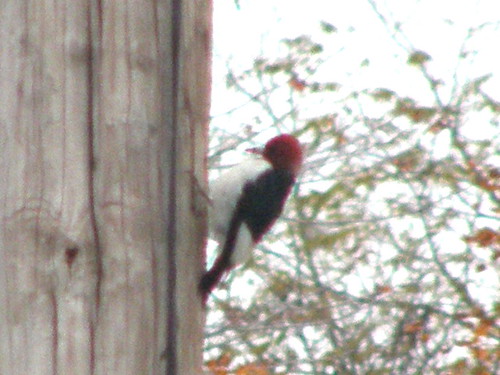
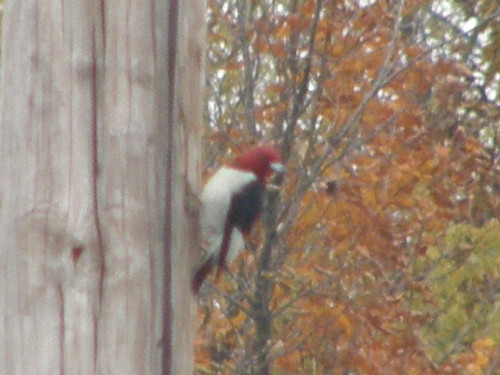
On a sad note, while taking these pictures, I found a dead male Red-bellied Woodpecker laying on the ground under a utility pole. It looked to have been electrocuted. Tweet


On a sad note, while taking these pictures, I found a dead male Red-bellied Woodpecker laying on the ground under a utility pole. It looked to have been electrocuted. Tweet
Monday, October 05, 2009
Queen City Birders Club Birding Blitz Weekend
Tweet
Last Saturday, I attended the Ohio Young Birders Club/Queen City Birders Club Birding Blitz Weekend/campout held at Hueston Woods State Park. It was nice to see young people out enjoying and learning about nature instead of inside playing video games. I decided against camping, since I am currently tentless -probably glad I did.
After breakfast, I headed on over to the bird banding station run by the Avian Research and Education Institute. It was a little cool early, but they had some good birds. Here are a few of the birds from the morning.
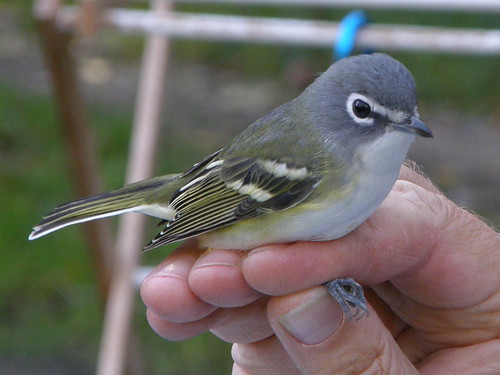 Blue-headed Vireo
Blue-headed Vireo
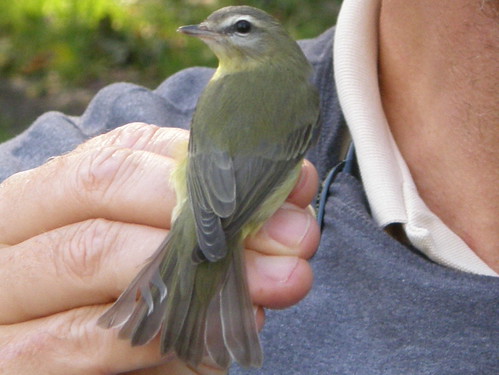 Philadelphia Vireo
Philadelphia Vireo
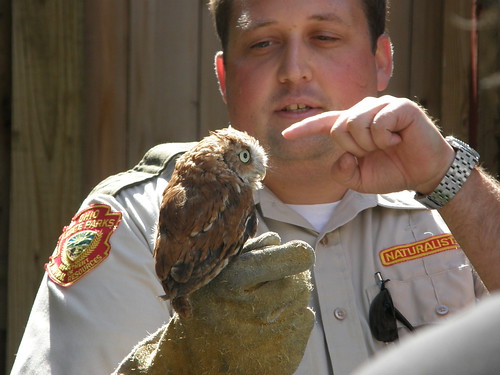 Eastern Screech-Owl
Eastern Screech-Owl
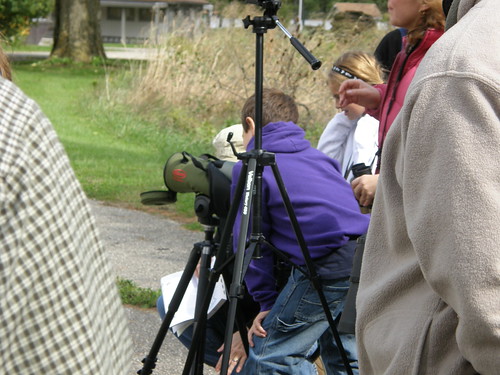
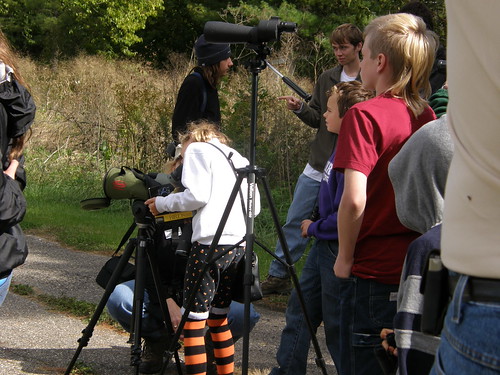 Dr. Jill Russell instructing young birders on how to use field marks to differentiate Great Egrets from Great Blue Herons.
Dr. Jill Russell instructing young birders on how to use field marks to differentiate Great Egrets from Great Blue Herons.
Dr. Herman Mays Jr., Curator of Zoology at the Cincinnati Museum Center, gave a talk on what it is like and what it takes education wise to become a professional ornithologist. He presented pics of the many birds he has seen while traveling the world working as an ornithologist. Hopefully, this will inspire the youngins to be interested in science as a career and get as much education as possible.
Dr. Mays and volunteers from the Cincinnati Museum Center came with some dead birds to show how one goes about preparing a study skin specimen for museum collections.
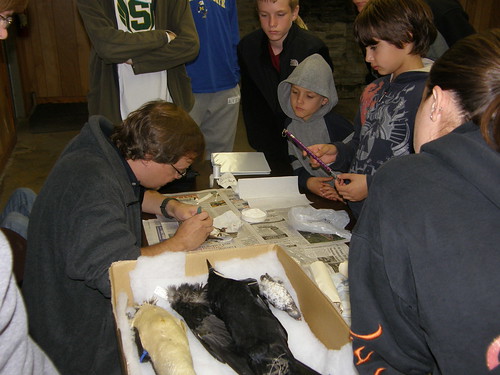 Dr. Herman Mays Jr. showing kids how to skin birds. (bird here is a Rose-breasted Grosbeak)
Dr. Herman Mays Jr. showing kids how to skin birds. (bird here is a Rose-breasted Grosbeak)
Tweet
After breakfast, I headed on over to the bird banding station run by the Avian Research and Education Institute. It was a little cool early, but they had some good birds. Here are a few of the birds from the morning.
 Blue-headed Vireo
Blue-headed Vireo Philadelphia Vireo
Philadelphia VireoEvent attendants got a behind the scenes tour of the education birds at the Hueston Woods Raptor Center by the park naturalist. The kids got to watch as the naturalist fed the Golden and Bald Eagles as well as the resident bobcat and cougar.
 Eastern Screech-Owl
Eastern Screech-OwlDr. Dave Russell gave a very informative talk on sparrow ID in preparation for Sunday morning's trip to Miami Whitewater Wetlands for sparrow banding. (I did not go to the sparrow banding, too much traveling for this eastsider who was already an hour and a half away from home!)
More important than anything else, including the ticking off of life birds for us older birders, is that we take the time to plant the seeds of appreciation & discovery of the natural world in children.
More important than anything else, including the ticking off of life birds for us older birders, is that we take the time to plant the seeds of appreciation & discovery of the natural world in children.

 Dr. Jill Russell instructing young birders on how to use field marks to differentiate Great Egrets from Great Blue Herons.
Dr. Jill Russell instructing young birders on how to use field marks to differentiate Great Egrets from Great Blue Herons. Dr. Herman Mays Jr., Curator of Zoology at the Cincinnati Museum Center, gave a talk on what it is like and what it takes education wise to become a professional ornithologist. He presented pics of the many birds he has seen while traveling the world working as an ornithologist. Hopefully, this will inspire the youngins to be interested in science as a career and get as much education as possible.
Dr. Mays and volunteers from the Cincinnati Museum Center came with some dead birds to show how one goes about preparing a study skin specimen for museum collections.
 Dr. Herman Mays Jr. showing kids how to skin birds. (bird here is a Rose-breasted Grosbeak)
Dr. Herman Mays Jr. showing kids how to skin birds. (bird here is a Rose-breasted Grosbeak)Before taking off, I decided to go back to the campground for the owl walk given by Susan from Raptor, Inc. She was able to call in a gray morph screech-owl that called back and flew over everyone's head, landing in a nearby tree. Everyone got an up close look at the bird.
Labels:
AREI,
Hueston Woods,
OYBC,
QCBC,
Raptor Inc.
Friday, September 18, 2009
Midwest Birding Symposium
Tweet
Finally made it up to Lakeside. Checked in and got the key for my cabin. When I registered, I was told that everything was full, so I had to settle for a rustic cabin. Here is the rustic cabin that I'm staying in
 Not too bad with a sleeping bag. I enjoy not having the temptation of watching TV!
Not too bad with a sleeping bag. I enjoy not having the temptation of watching TV!
Birders were chumming for birds using popcorn. Didn't draw much other than Ring-billed Gulls and a few Herring Gulls. A few Canada Geese flew over as well. One birder advised that the popcorn was blowing into the windows of the lower deck of the boat. Saw some Caspian Terns earlier, but none while on the cruise.


Cruising by island, note the dead trees from all of the Double-crested Cormorant whitewash.
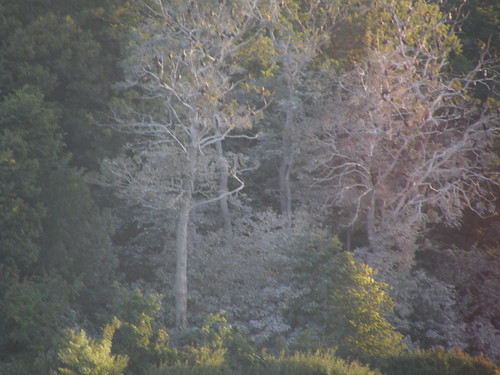
Beautiful sunset as we were heading back to the Lakeside dock.


Meeting lots of new birders, internet bird friends, and ones I haven't seen in a long time! Tweet
 Not too bad with a sleeping bag. I enjoy not having the temptation of watching TV!
Not too bad with a sleeping bag. I enjoy not having the temptation of watching TV!Birders were chumming for birds using popcorn. Didn't draw much other than Ring-billed Gulls and a few Herring Gulls. A few Canada Geese flew over as well. One birder advised that the popcorn was blowing into the windows of the lower deck of the boat. Saw some Caspian Terns earlier, but none while on the cruise.


Cruising by island, note the dead trees from all of the Double-crested Cormorant whitewash.

Beautiful sunset as we were heading back to the Lakeside dock.


Meeting lots of new birders, internet bird friends, and ones I haven't seen in a long time! Tweet
Thursday, September 17, 2009
Early American Pipit
Tweet
I decided to stop by East Fork State Park Wednesday morning before going to the store to get everything I need for the upcoming Midwest Birding Symposium. Since there was only one fisherman on the beach, I thought I might have a chance of seeing some shorebirds. There wasn't much going on bird wise, despite the lack of people and dogs. I did manage to see one Pectoral Sandpiper looking for bugs in the grass with the Killdeer - it even puffed up and threatened the Killdeer - pretty cool. There was also an Osprey flying around.
Went to the other side of the beach by the fisherman, I wasn't expecting to see anything. From a considerable distance, a small bird briefly caught my eye in the grass. I was hoping it was another wondering Northern Wheatear, but I know that would be unlikely. I went over to investigate and found this American Pipit (Anthus rubescens) (dang, but still good bird) chasing bugs in the grass with a Killdeer.
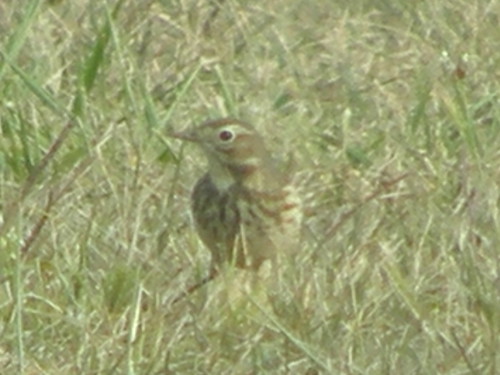
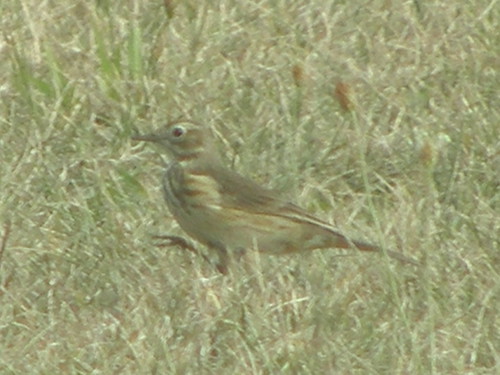

If everything goes right with my laptop, my next post should be from the south shore of Lake Erie from the Midwest Birding Symposium. Tweet
Went to the other side of the beach by the fisherman, I wasn't expecting to see anything. From a considerable distance, a small bird briefly caught my eye in the grass. I was hoping it was another wondering Northern Wheatear, but I know that would be unlikely. I went over to investigate and found this American Pipit (Anthus rubescens) (dang, but still good bird) chasing bugs in the grass with a Killdeer.



If everything goes right with my laptop, my next post should be from the south shore of Lake Erie from the Midwest Birding Symposium. Tweet
Friday, September 04, 2009
International Vulture Awareness Day 2009
Tweet
Today, September 5th, is International Vulture Awareness Day. Vultures (sometimes wrongfully called Buzzards, which is a term for Old World hawks - Buteos) play a vital role in our ecosystems by cleaning up dead carcasses. Many people wrongfully fear vultures, which is unwarranted. Below are some facts about vultures that make them cool - at least to me anyway!
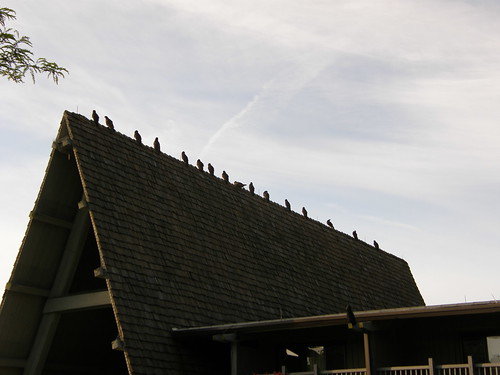 A "wake" of Black and Turkey Vultures.
A "wake" of Black and Turkey Vultures.
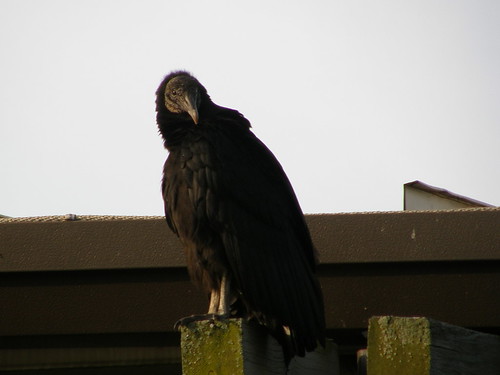 Black Vulture Coragyps atratus
Black Vulture Coragyps atratus
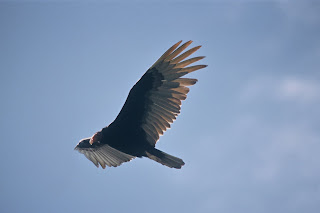 Turkey Vulture Cathartes aura Photo: USFWS
Turkey Vulture Cathartes aura Photo: USFWS
 Turkey Vulture Cathartes aura Photo: USFS
Turkey Vulture Cathartes aura Photo: USFS
I think vultures are cool! Tweet
Did you know that a group of vultures is called a wake?
 A "wake" of Black and Turkey Vultures.
A "wake" of Black and Turkey Vultures. Black Vulture Coragyps atratus
Black Vulture Coragyps atratusTurkey Vultures are one of very few birds that can actually smell, which allows them to locate carrion by scent. Black Vultures (which cannot smell) take advantage of the TV's ability to find carcasses by scent and often repay the TVs by bullying them while feeding.
 Turkey Vulture Cathartes aura Photo: USFWS
Turkey Vulture Cathartes aura Photo: USFWSAccording to DNA studies, New World Vultures, (Black and Turkey Vultures around here) are more related to storks than raptors. Many people find this hard to envision, but when I picture storks like the Wood Stork and Jabiru , the similarities are very apparent to me. This is called convergent evolution.
 Turkey Vulture Cathartes aura Photo: USFS
Turkey Vulture Cathartes aura Photo: USFSDid you know that the pH of a vulture's stomach acid is 0 (pH of water is 7)? This makes it very corrosive and allows them to eat rotting flesh that contains bacteria/toxins such as anthrax and botulinum, which would kill just about any other animal. This also allows them to use it as a weapon, for when they feel threatened, they can projectile vomit at their harasser.


I think vultures are cool! Tweet
Monday, August 10, 2009
Hot, but not-so-hot birding
Tweet
Despite the forecast, I just had to get outdoors Sunday. So I decided to go hit a couple of spots down on the Ohio River. With the heat, I wasn't expecting much bird wise. The morning started out way too hot and humid - I was already sweating profusely by 9AM.
I checked out Crooked Run Nature Preserve in Clermont Co., Ohio first. It was very dead bird and bug wise, with the best bird being a young Broad-winged Hawk being mobbed by a family of Eastern Kingbirds.
Here is my attempt to photograph a Slender Spreadwing at Crooked Run:
I then decided to head to my cousin's farm in southern Brown Co. Ohio, but on the way I had found a good sized patch of Swamp Rose Mallow and Swamp Milkweed in a little river inlet. I decided to stop and look around. It was just too marshy to go into. I did see a Giant Swallowtail butterfly winging it high above me, so I decided to look around some more. I could hear a Yellow-breasted Chat and White-eyed Vireo calling on the other side of the inlet, but could never find them. A Ruby-throated Hummingbird was flitting around with some Silver-spotted Skippers on teasel . Other than that, it was just hot and humid. While walking back to the car, I noticed two Great Egrets flying upriver along the far Kentucky shore. When I got back to the car, this bright orangish-yellow wildflower caught my eye. It was growing on the sandy bank (atop a cliff) of the Ohio River.

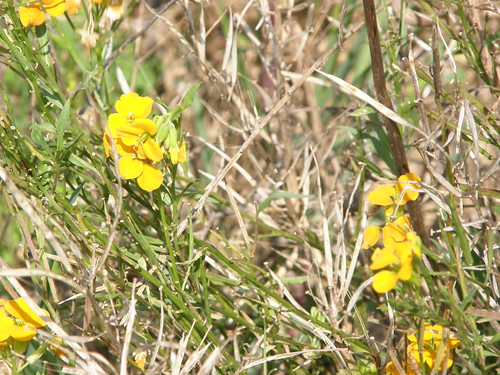
 Most likely Wormseed Wallflower Erysimum cheiranthoides?
Most likely Wormseed Wallflower Erysimum cheiranthoides?
Growing in Clermont Co. not too far from the Brown Co. line. 2' high.
For some reason, I tend to have a hard time remembering the names of plants that I have seen before. I usually just think "I know that I know this plant, just can't remember the name" and go on. I couldn't remember having seen this plant before. I could tell it was in the mustard family by looking at its flowers and seed pods, but that's about it. I can't find it in any of my wildflower books and the internet search results are confusing (some kind of wallflower). Is this likely a non-native/garden escape? Comments welcome.
Update: Flower is most likely European Wormseed Wallflower. Thanks goes to Jim McCormac for his botanical expertise.
Butterflies appeared to be more abundant recently with the heat. I guess the cool, damp start to the summer had everything on hold. I finally heard katydids for the first time in a while, it was eerily quiet without them.
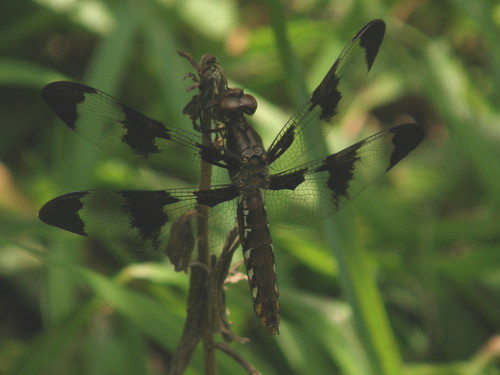
I checked out Crooked Run Nature Preserve in Clermont Co., Ohio first. It was very dead bird and bug wise, with the best bird being a young Broad-winged Hawk being mobbed by a family of Eastern Kingbirds.
Here is my attempt to photograph a Slender Spreadwing at Crooked Run:
I then decided to head to my cousin's farm in southern Brown Co. Ohio, but on the way I had found a good sized patch of Swamp Rose Mallow and Swamp Milkweed in a little river inlet. I decided to stop and look around. It was just too marshy to go into. I did see a Giant Swallowtail butterfly winging it high above me, so I decided to look around some more. I could hear a Yellow-breasted Chat and White-eyed Vireo calling on the other side of the inlet, but could never find them. A Ruby-throated Hummingbird was flitting around with some Silver-spotted Skippers on teasel . Other than that, it was just hot and humid. While walking back to the car, I noticed two Great Egrets flying upriver along the far Kentucky shore. When I got back to the car, this bright orangish-yellow wildflower caught my eye. It was growing on the sandy bank (atop a cliff) of the Ohio River.


 Most likely Wormseed Wallflower Erysimum cheiranthoides?
Most likely Wormseed Wallflower Erysimum cheiranthoides?Growing in Clermont Co. not too far from the Brown Co. line. 2' high.
For some reason, I tend to have a hard time remembering the names of plants that I have seen before. I usually just think "I know that I know this plant, just can't remember the name" and go on. I couldn't remember having seen this plant before. I could tell it was in the mustard family by looking at its flowers and seed pods, but that's about it. I can't find it in any of my wildflower books and the internet search results are confusing (some kind of wallflower). Is this likely a non-native/garden escape? Comments welcome.
Update: Flower is most likely European Wormseed Wallflower. Thanks goes to Jim McCormac for his botanical expertise.
Butterflies appeared to be more abundant recently with the heat. I guess the cool, damp start to the summer had everything on hold. I finally heard katydids for the first time in a while, it was eerily quiet without them.

Female Common Whitetail
Tweet
Had to get back to the A/C!!!
Sunday, July 26, 2009
Fledgling Cedar Waxwings
Tweet
My niece and nephews alerted me to a baby bird in the middle of the the gravel drive beside my house today. When I went over to investigate, one fledgling flew up into the trees, but I couldn't tell what it was. They said that there was another bird still in the middle of the drive, so I looked closer and found this:

This one took a little more coaxing to fly than its sibling, so I picked it up and it flew out of my hand and into the trees. An adult bird was still alarming me, a good sign. Since almost all birds can't smell, there is no need to worry about the parents smelling me - it is an old wives' tale.
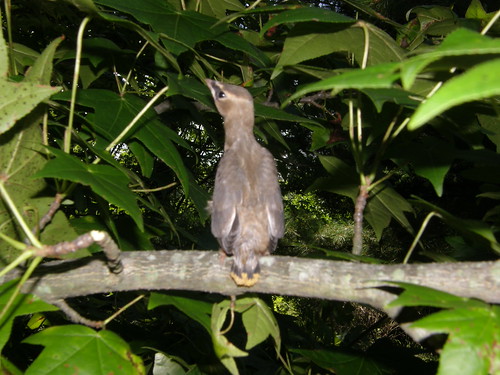 A good ending and a definitely confirmed OBBA II entry! (although I already had them confirmed with nest building.)
Tweet
A good ending and a definitely confirmed OBBA II entry! (although I already had them confirmed with nest building.)
Tweet
This is the first time I have ever seen a fledgling cedar waxwing. Since people fly up and down this drive, I decided to try to coax it back into the trees. I knew it wasn't abandoned because I could hear an adult waxwing giving its "high zeet" alarm call.

This one took a little more coaxing to fly than its sibling, so I picked it up and it flew out of my hand and into the trees. An adult bird was still alarming me, a good sign. Since almost all birds can't smell, there is no need to worry about the parents smelling me - it is an old wives' tale.
 A good ending and a definitely confirmed OBBA II entry! (although I already had them confirmed with nest building.)
Tweet
A good ending and a definitely confirmed OBBA II entry! (although I already had them confirmed with nest building.)
Tweet
Thursday, July 09, 2009
I think I am becoming addicted to oding...
Tweet
Looking for something to hold me by until fall migration, I have recently taken up the hobby of oding. What is oding you ask? It is the term for the hobby of observing dragonflies and damselflies. Oding comes from the Latin name for the order in which dragonflies and damselflies belong, Odonata. Last Wednesday, while in the area, I decided to stop by Miami Meadows Park to look for odes. The place was hopping!
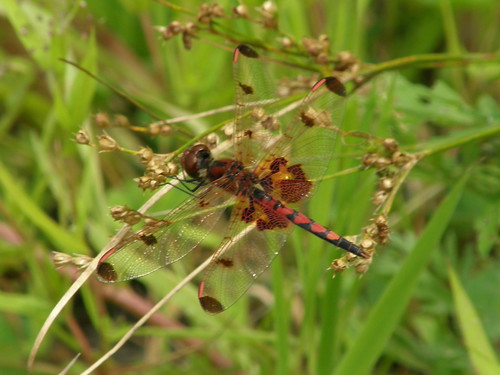
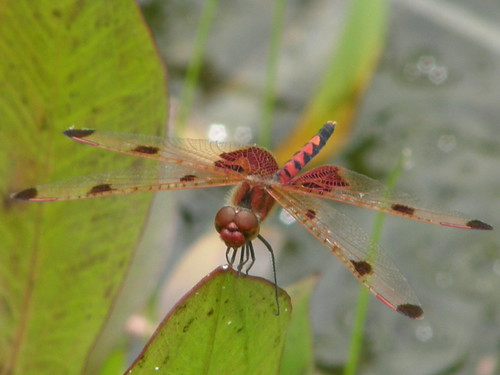 The Calico Pennants were awesome! A lifer
The Calico Pennants were awesome! A lifer
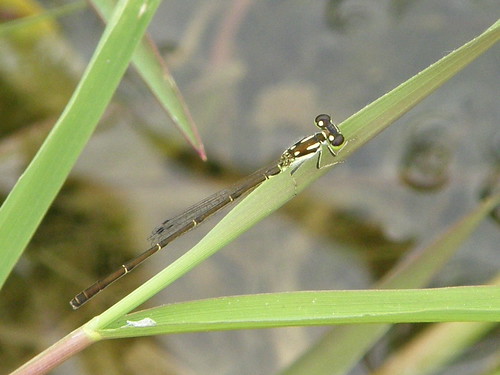 Fragile Forktail, lifer
Fragile Forktail, lifer
Species list for the day (what I could ID):
Calico Pennant
Black Saddlebags
Common Whitetail
Eastern Amberwing
Blue Dasher
12 Spotted Skimmer
Widow Skimmer
Eastern Pondhawk
Common Green Darner
Familiar Bluet
Skimming Bluet
Citrine Forktail
Eastern Forktail
Fragile Forktail
Tweet

 The Calico Pennants were awesome! A lifer
The Calico Pennants were awesome! A liferSome damselflies were so small, I could hardly see them. Below is my attempt to photograph a Citrine Forktail. You can't tell it here, but it was cool looking.
 Fragile Forktail, lifer
Fragile Forktail, liferSpecies list for the day (what I could ID):
Calico Pennant
Black Saddlebags
Common Whitetail
Eastern Amberwing
Blue Dasher
12 Spotted Skimmer
Widow Skimmer
Eastern Pondhawk
Common Green Darner
Familiar Bluet
Skimming Bluet
Citrine Forktail
Eastern Forktail
Fragile Forktail
I don't take a guide in the field with me, as I find the best way to learn to ID Odonata is to just start by taking photos of everything that you can't identify with a quick glimpse. I then go to the guides and Internet once I have uploaded them. At first, I thought it was nearly impossible for me to ID odes, however I find it is easier then iding many birds. Just like birds, immatures and females present more problems. But unlike birds, odes fly around attached to each other while mating, giving an opportunity to ID females by association.
I find that the one dragonfly guide I have (doesn't cover damsels) is a little difficult to start out with, because it covers all of North America. The first guide I go to is actually on the net and put out in print by ODNR Division of Wildlife - Dragonflies and Damselflies of Ohio.
I find that the one dragonfly guide I have (doesn't cover damsels) is a little difficult to start out with, because it covers all of North America. The first guide I go to is actually on the net and put out in print by ODNR Division of Wildlife - Dragonflies and Damselflies of Ohio.
Another awesome site that I use is William Hull's (who I credit with getting me hooked on oding! ;-) site Mangoverde. This site also has a world bird guide as well as odes and butterflies.
My favorite ode is the Ebony Jewelwing, pictured below -
My favorite ode is the Ebony Jewelwing, pictured below -
Tweet
Subscribe to:
Comments (Atom)
